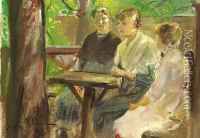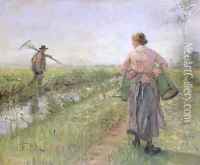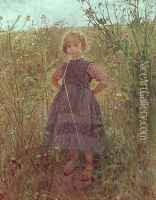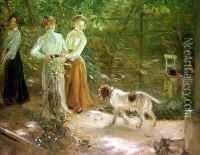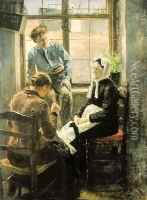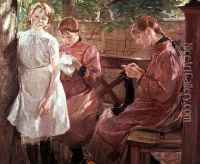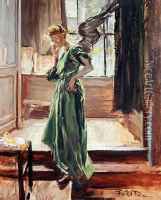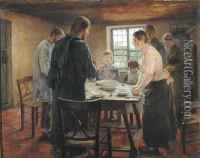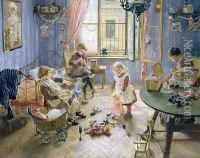Fritz von Uhde Paintings
Fritz von Uhde was a German painter, primarily known for his genre and religious themed works. Born Friedrich Karl Hermann Uhde on May 22, 1848, in Wolkenburg, Saxony, he began his career in the military before turning to art. Originally trained as a military engineer, von Uhde's passion for painting led him to abandon his military career and pursue art full-time.
He studied at the Dresden Academy of Fine Arts and later in Munich under the guidance of history painter Alexander von Wagner. Von Uhde's early works were characterized by historical and military subjects, reflecting his background. However, he soon developed an interest in the naturalistic movement and plein air painting, which influenced the evolution of his style.
A trip to Paris in the early 1880s introduced von Uhde to the works of the French impressionists, further impacting his approach to painting. He became one of the early German adopters of impressionist techniques, although his works often maintained a distinctly realist foundation. Von Uhde is particularly noted for his 'Saviour Kinder' (Saviour of the Children) paintings, which depict scenes from the life of Christ in contemporary settings, a radical departure from traditional religious art of the time.
Throughout his career, Fritz von Uhde was a respected artist, receiving numerous awards and honors. He also played a role in introducing impressionism to Germany and influenced a number of younger German artists. Despite some criticism from traditionalists who preferred more conventional religious representations, von Uhde's works were generally well-received for their heartfelt and human portrayal of religious themes.
Fritz von Uhde died on February 25, 1911, in Munich. His legacy includes a body of work that captures a unique blend of the naturalistic, realist, and impressionist styles, and he remains an important figure in the transition of German art to the modern era.







